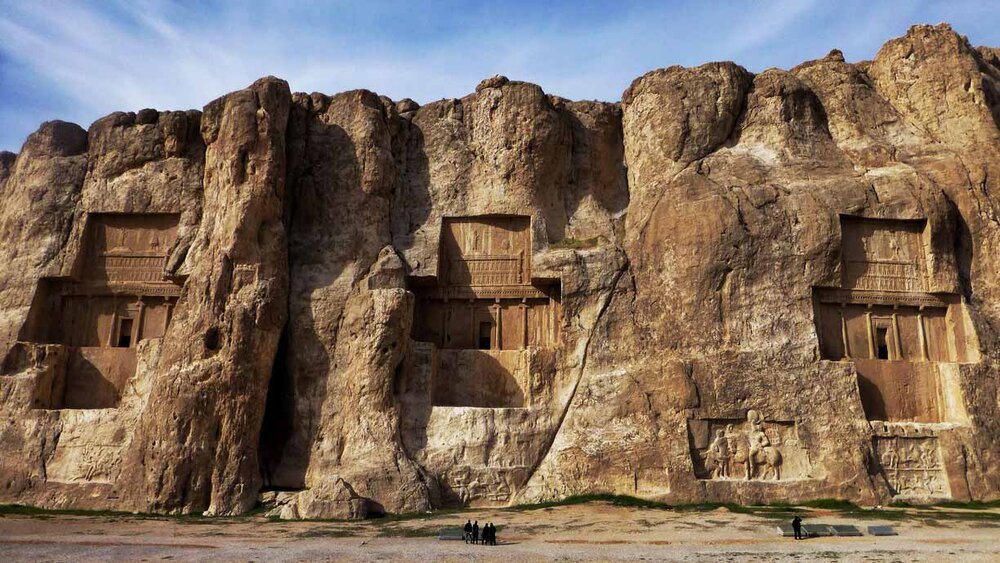Iran documenting inscriptions in Persepolis, Naqsh-e Rostam

TEHRAN – A documentation project has been commenced on the inscriptions in Persepolis and Naqsh-e Rostam, near the southern city of Shiraz, ISNA reported.
The project aims at documenting all the written works from the Achaemenid-era (550-330 BC) to the contemporary era, which are unique in terms of linguistics, Hamid Fadai, director of the world heritage site of Persepolis said on Friday.
The experts expect that the documentation of the inscriptions will put the restoration projects of the sites on the right track and will help archeology studies and even the tourism in these areas, the official added.
Persepolis, also known as Takht-e Jamshid, whose magnificent ruins rest at the foot of Kuh-e Rahmat (Mountain of Mercy), was the ceremonial capital of the Achaemenid Empire. It is situated 60 kilometers northeast of the city of Shiraz in Fars Province.
The royal city of Persepolis, which ranks among the archaeological sites which have no equivalent, considering its unique architecture, urban planning, construction technology, and art, was burnt by Alexander the Great in 330 BC apparently as a revenge to the Persians because it seems the Persian King Xerxes had burnt the Greek City of Athens around 150 years earlier.
The city’s immense terrace was begun about 518 BC by Darius the Great, the Achaemenid Empire’s king. On this terrace, successive kings erected a series of architecturally stunning palatial buildings, among them the massive Apadana palace and the Throne Hall (“Hundred-Column Hall”).
This 13-ha ensemble of majestic approaches, monumental stairways, throne rooms (Apadana), reception rooms, and dependencies is classified among the world’s greatest archaeological sites.
Persepolis was the seat of the government of the Achaemenid Empire, though it was designed primarily to be a showplace and spectacular center for the receptions and festivals of the kings and their empire.
Situated near Persepolis, the Achaemenid necropolis of Naqsh-e Rostam, meaning “Picture of Rostam” is named after mythical Iranian hero which is most celebrated in Shahnameh and Persian mythology.
One of the wonders of the ancient world, Naqsh-e Rostam embraces four tombs are where Persian Achaemenid kings are laid to rest, believed to be those of Darius II, Artaxerxes I, Darius I and Xerxes I, although some historians are still debating this.
There are gorgeous bas-relief carvings above the tomb chambers that are similar to those at Persepolis, with the kings standing on thrones supported by figures representing the subject nations below. There also two similar graves situated on the premises of Persepolis that probably belong to Artaxerxes II and Artaxerxes III.
Beneath the funerary chambers are dotted with seven Sassanian-era (224–651) bas-reliefs cut into the cliff depict vivid scenes of imperial conquests and royal ceremonies.
ABU/MG

Leave a Comment